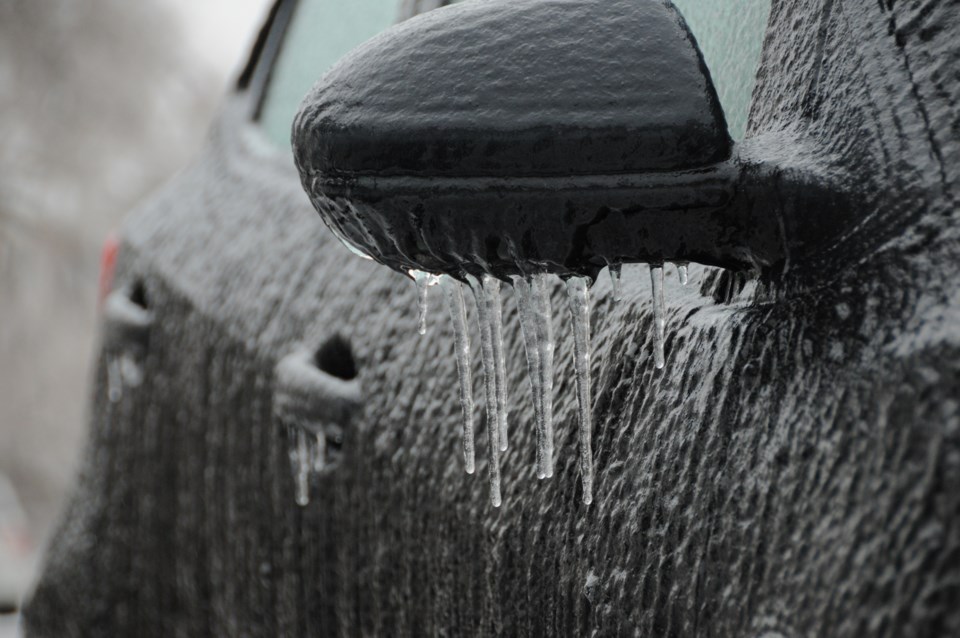For a town that was literally bought and sold on the promise of long winters, Whistler wasn’t really built for the cold or snow.
A seven-day cold snap with temperatures descending below -20 C caused pipes to freeze up, sprinkler systems to burst, and all kinds of other plumbing and ice-related emergencies. People posted photos of single-pane windows, which would have been considered cheap in the ‘80s, layered with a solid inch of ice. A co-worker drove to the office holding his car door handle the whole way because the door latch had frozen. A lot of people couldn’t even get their vehicles to start.
While cold snaps often spell disaster in the Sea to Sky, the rest of Canada gets by just fine. In most of the country—being the mostly unpopulated middle and northern parts—temperatures below -20 C are common from December to March, and it can get a lot colder than that. Parts of northern and eastern B.C. dropped to -50 C in the week between Christmas and New Year’s Eve. Cities like Winnipeg, Edmonton and Montreal also manage to survive temperatures that can dip below -40 C for weeks at a time without an endless string of emergencies.
That’s because other places were built for those extreme conditions. Water and wet sprinkler lines are both insulated and heat-traced, and don’t run through cold attics or exterior walls. Cars have block heaters and there are outlets everywhere you park. People grease their car door latches with silicon lubricants that don’t freeze and use cold-weather oil and fluids under the hood.
You could argue that level of weatherproofing isn’t necessary here because our temperatures are generally mild by Canadian standards. And they are—most of the time. But we almost always get at least one or two cold snaps every winter, followed by the usual cold weather emergencies. It would have made way more sense to build for the extremes than for seasonal averages. Our current way of doing things means getting our asses kicked every time we drop below negative double digits.
The expensive reality is that we need to better winterize our businesses, homes and other buildings by properly insulating and heat-tracing water and sprinkler lines. All hose bibs should be frost-free. All rooms with pipes and sprinklers should have interior heating. Every house and housing unit should have at least two water shutoffs, one inside and one outside accessible in an emergency. All windows should be double-paned. No pipes should run through exterior walls, and if it’s impossible to retrofit those places then those pipes need to be insulated and heated.
It won’t be easy or cheap, but having pipes crack every winter isn’t necessarily the cheaper option and insurance rates and deductibles are already going up.
Extreme cold is one thing, but when it comes to snow you’d think we’d have everything all figured out by now. And yet every major storm seems to result in total chaos, and sometimes carnage, on local roads and highways. The main culprit is often someone from the city who thinks all-season tires are good enough (if they gave it any thought at all), but in truth I see lots of locals fishtailing on our snowy and icy roads as well. Winter tires can still slip and slide if the conditions are bad enough—you actually have to slow down sometimes and drive for the conditions.
If visitors from the city are inexperienced and ill-equipped, then locals are overconfident—following too closely, taking corners too quickly, and making assumptions about their skills and vehicles that can sometimes turn out to be wrong.
Road maintenance is also a challenge. We don’t usually sand our roads here like they do in places that get extreme cold, but instead layer on salt and other de-icers that are increasingly ineffective as the temperature drops. We also use mountains of gravel, which can provide some added grip in certain conditions but can also make it feel like you’re driving on ball bearings.
It seems like it would be a good idea to temporarily close the highway during the big storms to let the plows do their job, but instead we leave everything open and wind up with accidents and traffic jams that delay people far longer than a closure would. Tire checks do happen but not nearly enough, and rarely during actual storms when emergency services have their hands full. We also don’t encourage people to stay at home until the roads are properly taken care of. Everybody pretends like it’s business as usual even if 70 centimetres of snow falls overnight, then complains about the state of the roads and parking lots.
In a lot of ways, it turns out that we’re not built for summer either, as last summer’s heat wave showed. There is an active FireSmart and tree-thinning project underway to reduce our wildfire risk, but we still have a massive job ahead as forests have grown up around homes. Instead of preventative landscaping to maintain safe buffers, we let things run wild for too long.
With weather systems clearly changing in the region—I don’t know how else you can explain new records for heat, rain, cold and snow in less than a year—Whistler needs to be ready for everything.




